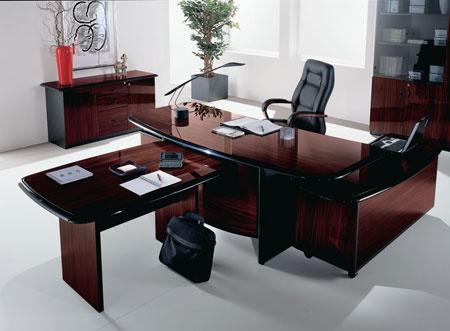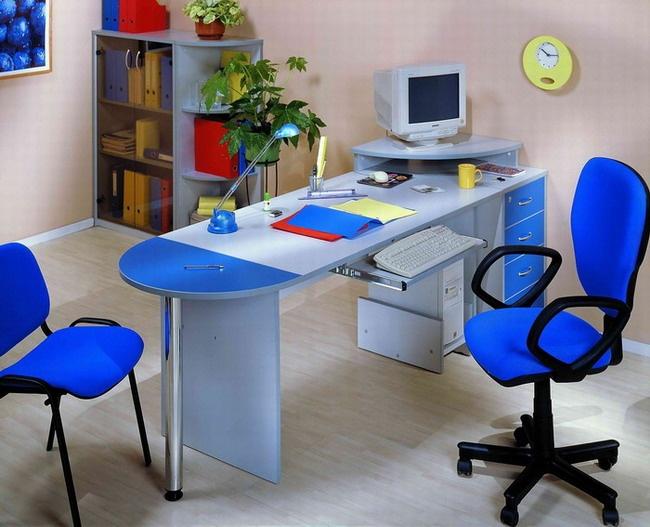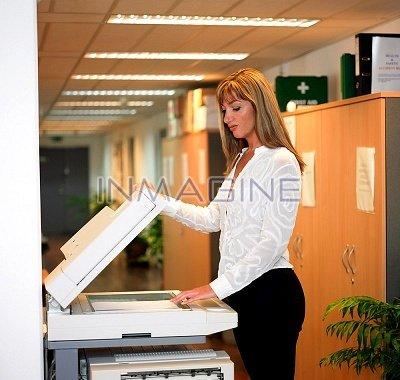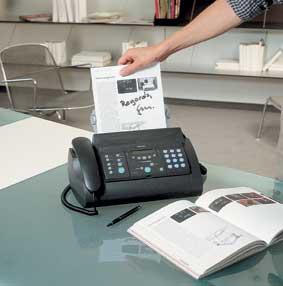
- •Друзь ю.М., KoпитькoT.В., Лобановa в.А.,
- •Unit 1. What is economics?
- •Lead-in
- •Text a: What is Economics? Active Vocabulary
- •Vocabulary focus
- •Language skills
- •Writing
- •Discussion points
- •Text b: what economics isn't
- •Text c: Micro, Macro and Fantasy Economics
- •Business communication
- •Introductions How to Say Hello
- •If you're determined not to be caught cardless again, here are some tips to help you remember:
- •Grammar present tenses
- •The present simple tense
- •The present continuous tense
- •The present simple versus the present continuous
- •Unit 2. Factors of production
- •Lead-in
- •Text a: factors of production Active Vocabulary
- •Natural resources – land and mineral deposits
- •Human resources – labour
- •Information as a factor of production
- •Vocabulary focus
- •Language skills
- •Writing
- •Text b:entrepreneurship
- •Text c:Factors of Production for an Innovation Economy
- •Business communication
- •In the office
- •Grammar the present perfect tense
- •The present perfect continuous tense
- •The present continuous versus the present perfect continuous
- •The present perfect versus the present perfect contnuous
- •Present tenses review
- •Unit 3.Types of economic systems
- •Lead-in
- •Text a: types of economic systems
- •Active Vocabulary
- •Vocabulary focus
- •Language skills
- •Writing
- •Discussion points
- •Text b:command economy
- •Text c: the good (and bad) model guide
- •Business communication
- •Grammar exercises
- •Past tenses
- •The past simple tense
- •The past continuous
- •The past simple versus the past continuous
- •The past simple versus the present perfect
- •Unit 4. Demand and supply
- •Lead-in
- •Text a: demand and supply
- •Vocabulary focus
- •Language skills
- •Writing
- •Discussion points
- •Text b. The role of prices
- •Text c: two factors that affect labour supply and demand
- •Business communication
- •Making an appointment
- •Ex.5. Read and study useful phrases.
- •Serge: Hi, Ann. It’s Serge. I’m calling to make an appointment for LeeAnn. She wants to meet Miles next week sometime.
- •A: Good morning. Dr. Brown's office. __________?
- •Grammar
- •Past perfect
- •Past perfect continuous
- •Past Continuous or Past Perfect Continuous?
- •Past Simple, Past Perfect or Past Perfect Continuous?
- •Past tenses review
- •Unit 5. Free-enterprise system
- •Lead-in
- •Text a: what is free enterprise?
- •Vocabulary focus
- •Language skills
- •Writing
- •Discussion points
- •Text b: role of government in a free-enterprise economy
- •Text c: invisible hand
- •Business communication
- •At the airport
- •Look at the picture. What do you think the phrase Live out of a suitcase mean?
- •Going through Customs.
- •2) Role- play the situations in the airport using the vocabulary of the lesson.
- •Grammar
- •Future tenses
- •The future simple tense
- •The future simple versus the present simple
- •The future simple versus be going to
- •Be going to versus the present continuous
- •The future continuous tense
- •The future continuous versus the future simple
- •The future perfect versus the future perfect continuous
- •Future tenses review
- •The imperative mood
- •Unit 6. Forms of business organisations
- •Lead-in
- •Text a: forms of business organisations
- •Active Vocabulary
- •Vocabulary focus
- •Language skills
- •Writing
- •Discussion points
- •Text b: nonprofit organisations
- •Text c: franchising
- •Business communication
- •At the hotel
- •In pairs read the following situations.
- •2). Choose the correct options to the questions.
- •Grammar
- •ArticleS
- •IntoEnglish.
- •Unit 7. Money
- •Lead-in
- •Text a: money and its role in the economy
- •Active Vocabulary
- •Money is a medium of exchange
- •Money is a measure of value or a unit of account
- •Money is a store of value
- •Money is a means of liquidity
- •Vocabulary focus
- •Language skills
- •Discussion points
- •Text b: a glimpse of the american, british and euro
- •Text c: a barter way of doing business
- •Business communication
- •On the phone
- •Inquiring about the telephone number
- •If you answer the phone and offer your help, you can say:
- •Useful Language Box
- •Grammar
- •Determiners
- •Numerals
- •Unit 8. Taxes
- •Lead-in
- •Text a: taxes
- •Active Vocabulary
- •Purposes of Taxation
- •Vocabulary focus
- •Language skills
- •Writing
- •Discussion points
- •Text b: taxation in the uk
- •Text c: taxes are good
- •Business communication
- •In company
- •Grammar
- •Pronouns
- •Adjective and adverb
- •Very, too, far, much, a lot, rather, a bit, a little, any, by far, quite, nearly, almost
- •Test yuorself
- •Test 1
- •Test 2
- •Test 3
- •Test 4
- •Test 5
- •Test 6
- •Test 7
- •Test 8
- •Test 9
- •Test 11
- •Test 12
- •Test 13
- •Test 14
- •Test 15
- •Граматичний довідник дієслово the verb
- •Дієслова to be і to have.
- •Часи дієслова
- •Група теперішніх часів Утворення стверджувальних, заперечних та питальних форм
- •Правила написання дієслівних форм
- •Типи питальних речень
- •Загальна таблиця випадків використання
- •Не мають форми тривалого часу дієслова, що виражають
- •Група минулих часів Утворення стверджувальних, заперечних та питальних форм
- •Типи питальних речень
- •Випадки вживання минулих часів
- •Група майбутніх часів Утворення стверджувальних, заперечних та питальних форм
- •Типи питальних речень
- •Випадки вживання майбутніх часів
- •Інші способи вираження майбутнього часу
- •Наказовий спосіб
- •Іменник thenoun
- •Число іменників
- •Деякі іменники мають особливі форми у множині:
- •Утворення множини іменників
- •Класифікація іменників за ознакою обчислювані/необчислювані
- •Випадки переходу необчислюваних іменників у обчислювані
- •Іменники, які узгоджуються із дієсловом в однині
- •Іменники, які узгоджуються із дієсловом у множині
- •Рід іменників
- •Рід іменників в англійській мові
- •Відмінки іменників
- •Відмінок іменника. Форми та особливості вживання присвійного відмінку
- •Форми присвійного відмінку
- •Особливості вживання присвійного відмінку
- •Вживання іменників - назв неістот у присвійному відмінку
- •Іменники у функції означення
- •Артикль
- •Вживання неозначеного артикля.
- •Вживання неозначеного артикля a/an (тільки із обчислюваними іменниками в однині)
- •A/anабо one
- •Артиклі з деякими необчислюваними іменниками
- •Вживання означеного артикля
- •Вживання означеного артикля the
- •Вживання нульового артикля (відсутність артикля)
- •Детермінанти
- •Присвійні прикметники і займенники
- •Присвійні прикметники
- •Присвійні займенники
- •Вказівніслова
- •Кількісніслова
- •Some/any/no
- •Many/much/a lot (lots) of/ (a) few/ (a) little
- •All (of)/most (of)/both (of)/ none (of)
- •Every/each
- •Another/the other/other
- •Either/neither (of)
- •Числівники
- •Займенник
- •Особові займенники
- •Itабоthere?
- •Неозначено-особовізайменники
- •IndefinitePersonalPronouns
- •Зворотні займенники
- •Прикметник
- •Прислівник
- •Ступені порівняння прикметників
- •Особливі випадки утворення ступенів порівняння прикметників і прислівників
- •Appendices
- •Словотворення Word formation
- •Enjoy your reading
- •I, Pencil My Family Tree as told to Leonard e. Read
- •Innumerable Antecedents
- •Money The History of Money
- •Extract 1
- •Extract 2
- •Extract 3
- •Success story
- •The Financier, by Theodore Dreiser Chapter III
- •The Iron Heel, by JackLondon Chapter 2 Challenges
- •Glossary
- •Internet Resources
- •Contents
Business communication
In the office
Ex.1. Look at the pictures below and say which of them is
a meeting room;
a director’s office;
a receptionist’s (secretary’s) office.

fig.1

fig.2

fig.3
Ex. 2. Read the words in the box and group them into categories. You can add other suitable words.
|
answering machine, calculator, calendar, computer, correction pen/fluid, desk tidy, desk lamp, fax (machine), file, filing tray, filing cabinet, hole punch, indoor plants, keyboard, laser printer, memo sheets, mouse mat, notepad, noticeboard, paper clips, (photo)copier, pigeonholes, post-it, printout, rubber (Am. eraser), scanner, sharpener, stapler, staples, staple remover, stick of glue, (tele)phone, telephone directory, text marker, in /out tray, wastepaper basket (Am. bin), workstation |
|
office furniture |
office supplies
|
office equipment |
others things |
|
filing cabinet swivel chair
|
paper clips correction pen |
computer calculator
|
printout wastepaper basket |
Ex.3. It so happens that many people spend more time in their office than at home. What things do you think can be used to decorate or personalise an office without spoiling its professional image? Discuss it with your partner.
Ex.4. Describe a room where a secretary/a receptionist works, their workstation and office equipment they usually use.
Ex.5. Rosa works as a chief executive secretary in a large industrial company.
a) Which of the following statements do you think are true of her in her job?
She works at a computer most of the time, where she writes letters and
reports.
She does quite a lot of general paperwork, e.g. filing reports, answering
letters and others.
She makes a lot of phone calls.
She sends faxes occasionally.
She often shows people around the office.
Every time she takes part in the negotiations as an interpreter.
She arranges meetings for her boss and other managers in the company.
She attends all the conferences or meetings in the company.
b) Describe Rosa’s job and her everyday duties.
Ex.6. Read the following two texts about office equipment.
Photocopying machine or (photo) copier.
Walk
into almost any business office, and you'll probably find a
photocopier ("copier") with a line of people waiting to use
it. For most businesses, small or large, the copier has become
standard equipment, much like having a desk to work at
and a chair to sit on. It’s pretty amazing to think that, in mere
seconds, you can produce an exact replica of what’s on a sheet of
paper! 
The procedure of producing a copy is very simple.
Make sure the photocopier is plugged into a power source.
Turn the photocopier on.
Open the copier lid.
Place the document to be photocopied face-down on the glass.
Select the options you want (number of pages, enlargements, lighter/darker).
Press the button “Start”.
Fax machine or fax
Even
though traditional fax machine is fast being replaced by e-mail and
Internet fax services, this workplace workhorse is still used for
transmitting information. They are easy to use and resemble dialing a
telephone. Here
are some basic instructions for sending a fax. 
Make sure the fax machine is plugged in, powered and connected to a working phone jack. Turn on the fax machine.
Fill out a piece of paper called a coversheet with
the information about the recipient’s name, his fax
number, your phone number, a short message intended for the recipient, number of pages (including coversheet).
Lay the documents face-up in the fax machine feeder tray with the coversheet on top.
Dial the recipient’s fax number.
Press the ‘fax’ or ‘send’ button, depending on the particular fax machine model.
As soon as all of the pages have been scanned into the memory of the fax machine, you’ll hear a series of signals which mean establishing a communication link. Wait for a few minutes as the fax is sent and then see a short confirmation report.
Ex.7. Explain to your new colleague how to use
a photocopier;
a fax machine;
a scanner;
a printer.
You may need the following phrases and linking words:
|
First, you must …. Then, you have to … (it’s necessary). You needn’t /You don’t have to … (it’s not necessary). If you press this key, the computer prints out the reading. If you press this key by mistake, you’ll lose all the data. |
Work in pairs
Ex.8. Read these mini-dialogues and role-play them.
1.
O. Bruno, can you send us your pricelist by fax?
B. Sure. I’ll fax you right now. What’s your fax number?
O. 38 for Ukraine, 044 for Kyiv, then 455 77 07.
B. OK. I’ve got that.
2.
B. Have you got my fax, Oleg? Is everything legible?
O. You’re not going to believe this, but the paper got stuck and the machine jammed.
B. No problem. I’ll send it through again.
3.
S. Will you be using the photocopier for long, Sue?
D. No. Why?
S. OK. I’ll wait then. I need to make a copy of the report for our meeting.
4.
S. Will you be using the photocopier for long, Danielle?
D. Oh, yes. I’ve got a pile of papers to copy.
S. Sorry, could you stop for a minute and let me make one copy, please? Our boss needs it urgently.
Ex.9. Complete the dialogues.
1.
A. __________________________________________?
B. Sure. I’ll fax you right now. What’s your fax number?
A. __________________________________________
B. OK. I’ve got that.
2.
A. Have you got my fax, Berta? Is everything legible?
B. __________________________________________
A. No problem. I’ll send it through again.
3.
A. __________________________________________?
B. No. Why?
A. __________________________________________
Ex.10. Now make dialogues of your own and role-play them with your partner.
